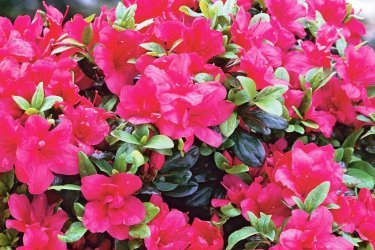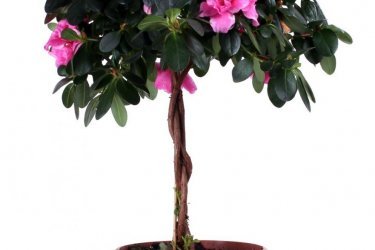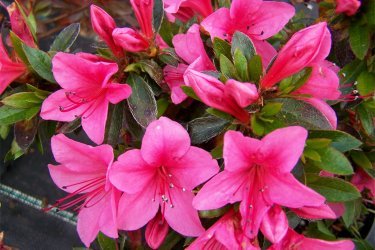Azalea
This gorgeous plant enjoys special respect among amateur flower growers.
The bright lush flowering of azaleas begins in winter, but not everyone can admire it. The flower is capricious, many position it as a one-time use.
In order for growing azaleas to be successful, you will need to study the rules of care and strictly adhere to them.
Growing, common problems
The flower belongs to rhododendrons, Only a few species are grown at home azaleas, most often Indian evergreen.
It goes on sale already blooming, in indoor conditions, but in the absence of proper care it quickly loses its attractiveness. Its leaves and buds fade, turn yellow, and fall off, which leads to the death of the flower.
It is for this reason that you need to study the recommendations for caring for azaleas after purchase and strictly adhere to them.
Azalea, care and reproduction
Flowers are contraindicated:
- placement near heating radiators;
- increased air dryness;
- air temperature exceeding + 20 C;
- bright sunlight;
- overdried soil - lack of moisture will cause the leaves to wither and the buds to drop.
What is useful for azalea:
- placement on western or northern windows;
- staying in the open air during the warm season, possibly in the garden or on the balcony, it is important that the area is shaded;
- abundant watering with cold, soft water, or settled water; the ideal option is watering with melt water or laying pieces of ice or snow on the ground during the flowering period. Periodically, a crystal of citric acid can be added to the water for irrigation;
- frequent spraying of leaves in the heat;
- removing new shoots that appear near already established buds.
In autumn, September-October, the plant is transferred to a room with a temperature of +14 to + 16 C, watering is reduced.
If all conditions are met, the plant will delight you with the beginning of flowering in December.
Transplanting azaleas, choosing the right soil and a suitable pot
The container for transplantation should have a large diameter, but not be deep. The soil should have high acidity; the best option is to purchase ready-made soil.
A mandatory point is to place a layer of drainage in the pot.
The first watering after transplantation should be plentiful, the entire earthen ball should be saturated with moisture.
Trimming
By pruning, you can give the plant the desired appearance. Often it formed as a standard tree.
Flower growers recommend that after trimming, bathe the crown of the plant in a pale pink solution of potassium permanganate; the entire crown is dipped in water so that the soil does not fall out of the pot; it is covered with polyethylene.
The plant is turned over and the crown is immersed in water for a few seconds.
Learn useful tips for growing this amazing flower and put them into practice. We are sure that everything will work out for you!



